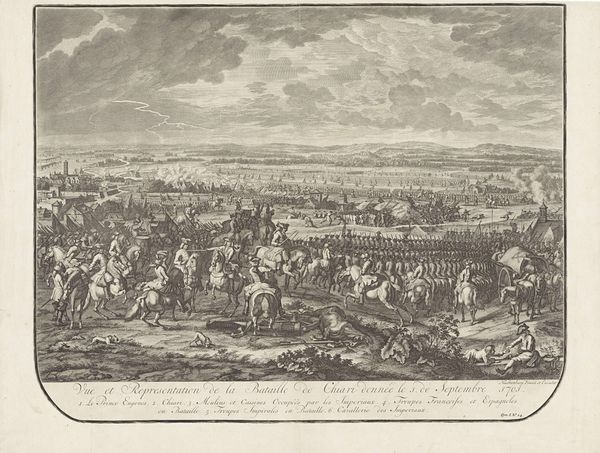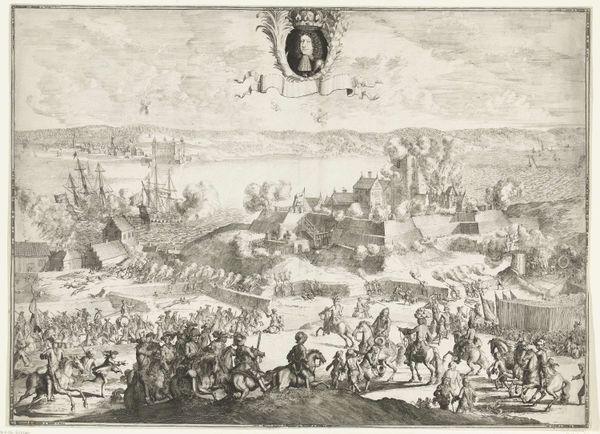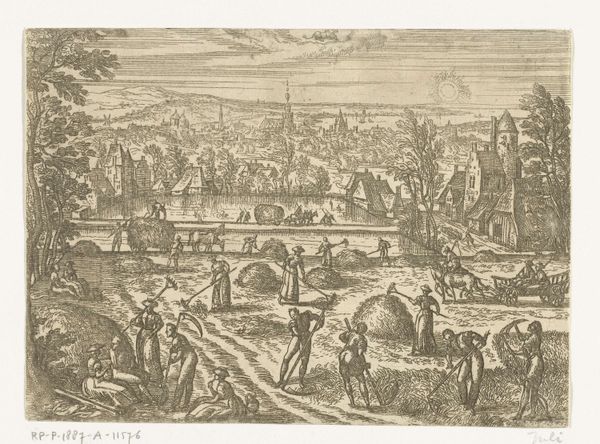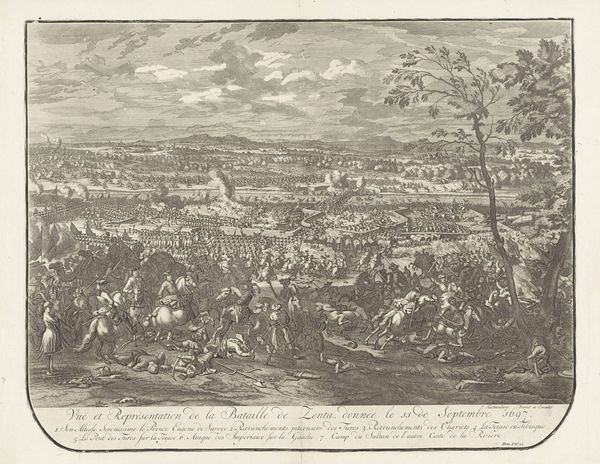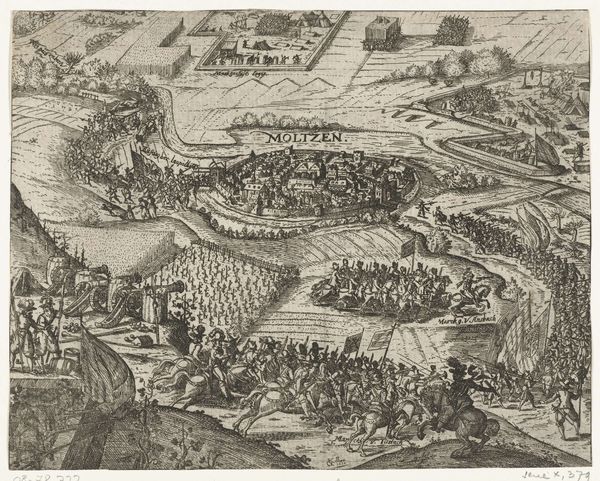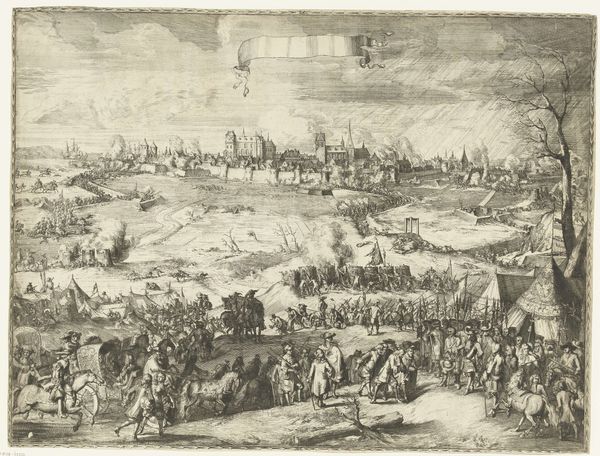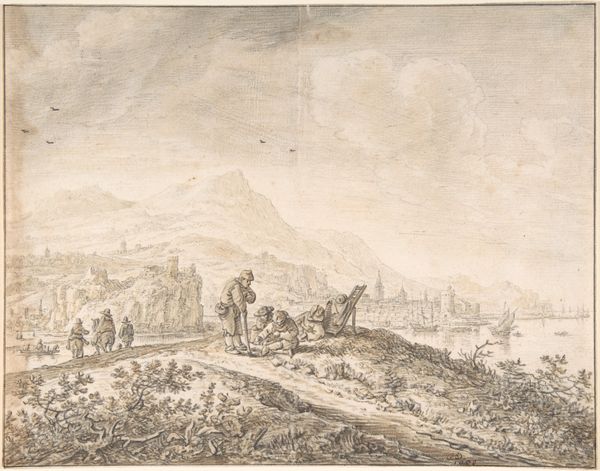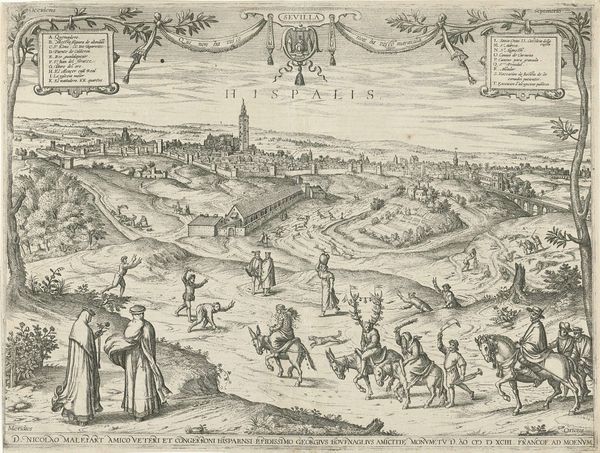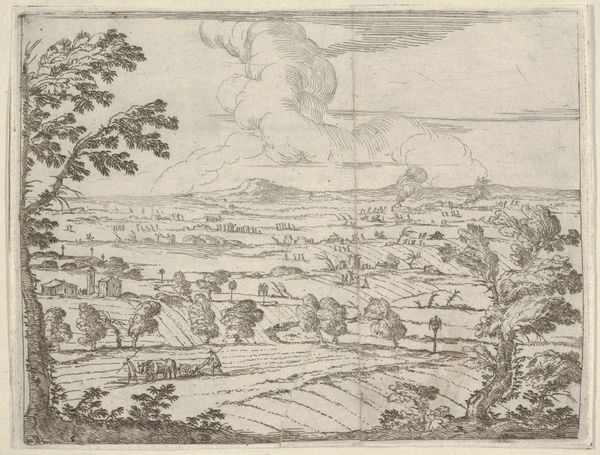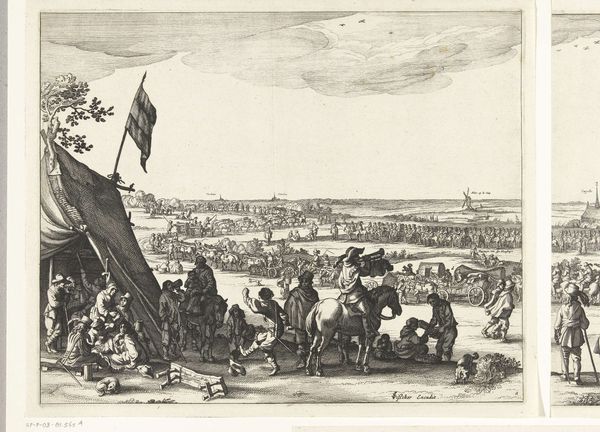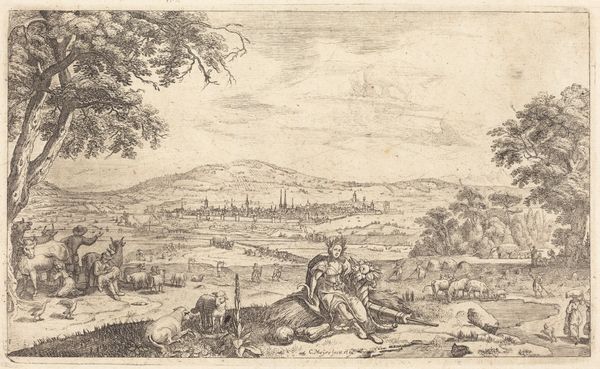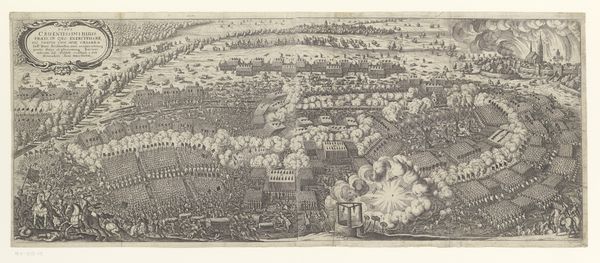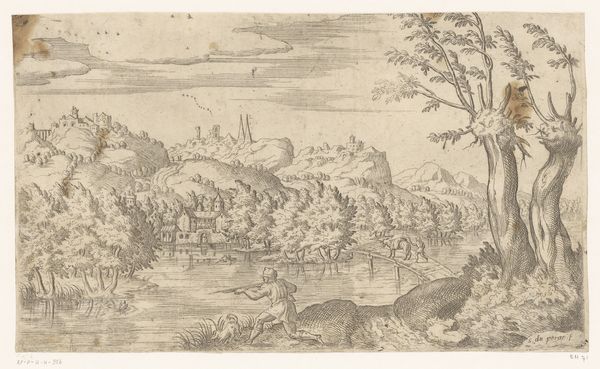
King Louis XIV and his Entourage at the Siege of Schenkenschans, 1672 c. 1675
0:00
0:00
painting, oil-paint
#
baroque
#
painting
#
oil-paint
#
landscape
#
oil painting
#
group-portraits
#
cityscape
#
history-painting
Dimensions: support height 62.5 cm, support width 89 cm, outer size depth 8 cm
Copyright: Rijks Museum: Open Domain
Curator: The overwhelming scale! It gives a detached, almost God’s-eye-view feeling to it, doesn’t it? Editor: Absolutely. This oil painting, believed to have been completed around 1675 by Lambert de (II) Hondt, captures “King Louis XIV and his Entourage at the Siege of Schenkenschans, 1672.” Quite a mouthful, isn't it? It attempts to monumentalize, of course, a historical event. What strikes me is how… beige it all is. The tone flattens what I imagine would have been a chaotic, labor-intensive siege into something quite subdued. Curator: Yes, look at the composition. Louis and his inner circle, finely attired, are posed observationally atop the scene while thousands presumably suffered to enact this imperial will. It presents power and access as being distant, yet inherently reliant, upon brute effort. I'm very interested in the supply chains to produce the clothing on those figures. How was the textile sourced, who spun the fiber, how was the garment produced to convey an air of casual opulence amidst battle? Editor: The symbolism here is strong. Louis is literally elevated, viewing the scene below as if it's his stage, or even better, a detailed map laid out for his pleasure. The artist is intentionally placing Louis within a long tradition of idealized rulers. What the image conveys is authority; divinely sanctioned leadership embodied by Louis. You can read a similar theme across the centuries in countless portraits, from ancient emperors to modern leaders. Curator: And yet the artist includes *the labor*, not exactly subtly, into this “celebratory” artwork, foregrounding all those unnamed bodies providing logistical support, toiling and fighting. It’s a window onto 17th century craft, manufacturing, warfare... a complex system of production presented to reinforce dynastic narratives. Look closely – all of those individuals contributed physically, at risk, in ways Louis never would. Editor: Agreed. What's compelling, in its way, is the visual construction of leadership: a few symbolic figures placed strategically above the fray, meant to resonate with ideas about glory and dominion. The choice of including such details about logistics seems in bad taste almost? Curator: Not bad taste. Real taste! Revealing what such displays of power *actually* cost in labor and material terms is insightful! Thanks to artists like Lambert, viewers can gain some degree of awareness regarding the material underpinning of power, even hundreds of years later. Editor: A stark reminder, then, that even history painting serves as more than mere documentation of events. It embodies concepts, stories that transcend eras through recognizable iconography. I find its commentary on visual displays of power equally interesting.
Comments
No comments
Be the first to comment and join the conversation on the ultimate creative platform.
